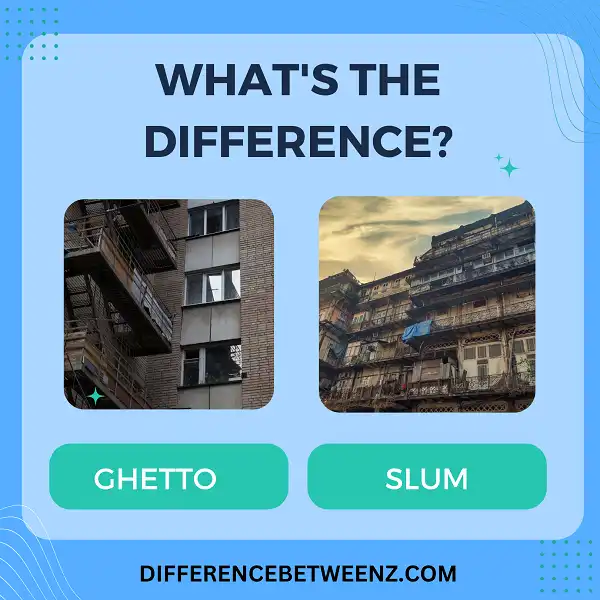In the United States, when we think of poverty, oftentimes the first thing that comes to mind is inner city neighborhoods known as ghettos. But what many people don’t know is that there is a big distinction between ghettos and slums. So, what’s the difference? Read on to find out.
What is a Ghetto?
Ghettos are areas that have been segregated from the rest of the city, usually based on economic status. They are often home to minority groups, and the residents of ghettos typically have little access to education, employment, or basic services.
Ghettos often develop in areas where there is little or no government oversight, and as a result, they can be hotbeds of crime and violence. Residents of ghettos often feel trapped and hopeless, and many people who grow up in ghettos never manage to escape the cycle of poverty.
The word “ghetto” originally referred to a specific area in Venice where Jews were required to live. However, the term has since been used to describe any number of segregated communities around the world.
What is Slum?
The slum is an area of a city, typically inhabited by poor people, that is in poor condition. Slums are often characterized by high levels of crime, poverty, and squalor.
In many cases, Slum areas are overcrowded and lack basic amenities such as running water and sanitation. Slums often form in areas that have been neglected by city planners or are otherwise considered to be “undesirable”.
As a result, Slum areas are often associated with urban decay and social problems. However, not all Slum areas are created equal; some Slums may only be marginally less desirable than other parts of the city, while others may be downright dangerous. Regardless, Slums are generally considered to be areas in need of redevelopment or gentrification.
Difference between Ghetto and Slum
Ghetto and slum are two words that are often used interchangeably. However, there are some important differences between the two terms.
- A ghetto is a secluded area that is inhabited by a group of people who share a common culture or background.
- Ghettos are often located in inner-city neighborhoods and are characterized by poverty and crime.
- In contrast, a slum is a rundown and overcrowded area that is usually found in large cities.
- Slums are often populated by families who are struggling to make ends meet.
While both ghettos and slums are associated with poverty and crime, ghettos generally have a stronger sense of community than slums. Ghettos also tend to be more tightly knit, with residents sharing common traditions and values.
Conclusion
Slums are often seen as a last resort for the impoverished and homeless, while ghettos are typically considered to be more dangerous neighborhoods. However, there is no strict definition of either term, and they can overlap in certain areas. The important thing to remember is that slums are not synonymous with poverty or crime – many people living in slums have stable jobs and homes. If you’re interested in learning more about these terms or need help distinguishing between them for your work or research, contact us today.


